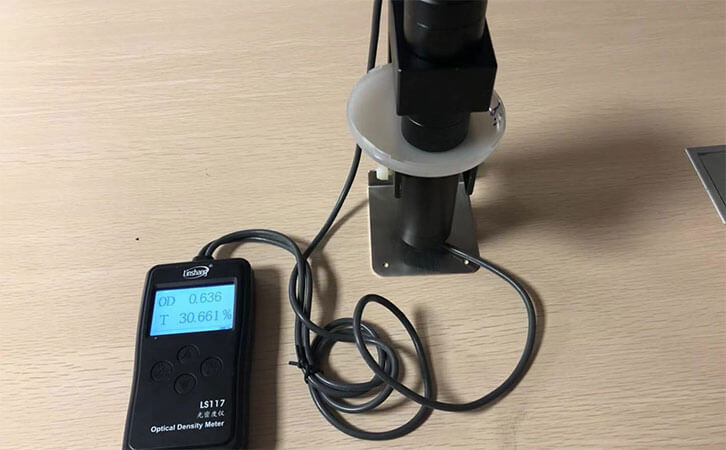How to Test the Opalescent Material Light Transmittance?
Transmittance is defined as the transmitted light intensity divided by the incident light intensity multiplied by one hundred percent. So why is the light transmittance of the test material divided into mirror material and opalescent material? The following is an example of the LS183 light transmission meter and the LS117 window tint measurement device.
We used the LS183 light transmission meter and the LS117 window tint meter measurement device to test the same piece of opalescent material. The transmittance measured by LS183 is much smaller than the data measured by LS117 window tint measurement device and the difference is very large.
Why will this happen?
This is because there is a certain distance between the LS183 light source and the receiver. When the light source is irradiated onto the opalescent material surface, the scattered light detector cannot receive it and the transmitted light is small. So the transmittance is small. The data thus tested is inaccurate. The LS117 window tint measurement device is based on the visual diffuse transmission principle. The two probes of the light source and the receiver are tightly combined. When testing, it can receive all the light including scattered light, so the light transmittance will be higher. The data is accurate.
Linshang LS117 window tint measurement device test the opalescent light transmittance
Generally, we use LS117 window tint measurement device to test the light transmittance of materials such as milky white, fog and frosted is measured. The LS117 window tint measurement device adopt the diffuse transmission principle, conforming to CIE function of photopic vision.
- Difference of LS116 Transmission & LS117 OD Meter
- Companre LS117 Optical Density Meter With Others
- LS117 Densitometer Measure Application
- Difference of LS117 Densitometer and X-Rite 341 Densitometer
- What’s the Difference Between Point Light and Parallel Light Transmittance Meter
- The details of LS152 glass light transmittance on-line monitoring device
